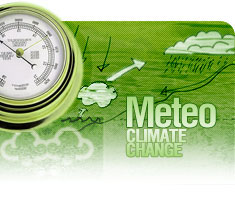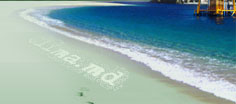https://www.theguardian.com/books/2023/dec/21/a-cold-spell-by-max-leonard-review-from-cube-to-crisis
In 1946 a young atmospheric scientist named Bernard Vonnegut made a significant discovery. It had already been shown that clouds could be made to produce snow or rain by "seeding" them with dry ice, but Vonnegut proved that an even more dramatic and persistent effect could be achieved with silver iodide. The following year, he encouraged his struggling younger brother to join the same lab, not as a scientist but as a copywriter. It was almost 20 years later that Kurt Vonnegut published his satirical novel Cat's Cradle, inspired by what he'd seen, in which a tyrant unleashes a synthetic form of ice ("ice-nine") that causes any water it touches to freeze instantly. The novel does not end happily for the planet or its inhabitants.
Ranging from the last ice age to the Anthropocene, Max Leonard's beguiling history considers the nature of ice as well as its place "in the popular imagination, how it has inspired literature and poetry, and therefore how we might be being diminished as it disappears". Its genesis was an experience of jarring but everyday incongruity: sitting in a pub one summer's evening, ice clinking in his drink, Leonard found himself watching TV footage of "meltwater disgorging into the seas of Greenland". He was struck by an urge to reconcile what was on the screen with what was in his glass. "My hope is that by bringing ice into a more intimate sphere ... the catastrophe happening in remote places will become more tangible - that we might feel more keenly what is being lost." But A Cold Spell is less an elegy and more a celebration of human ingenuity and adaptability. Ice, for Leonard, is a "radically disruptive substance", a source of terror and entrapment, yes, but also a matrix of revelation.
"Mankind," wrote Freud, "under the influence of the privations that the ... Ice Age imposed upon it, has become generally anxious." If that period of deep-freeze was a trauma for our species, it was also, Leonard suggests, a cradle of invention and creativity. In the painted caves of Chauvet, France, he finds the "most visible and famous relics of Ice Age life". The era also gave rise to the oldest depiction of a human being, in the 40,000-year-old mammoth-ivory sculpture known as the Venus of Hohle Fels.
'In my time,' wrote Mark Twain, 'ice was jewellery; none but the rich could wear it'
As glaciers have receded, the ice has divulged new curiosities. In 1862, a mountain guide whose companions had been killed by an avalanche 40 years earlier was asked to identify a corpse that had been spat out, largely intact, by a glacier near Chamonix. "This is Balmat's hand," he said. "I would never have dared to believe that, before I left this world, I'd be given the chance once more to shake the hand of one of my brave comrades." One hundred and thirty years later, two hikers spotted a body high in the Ötztal Alps. What they took for another lost climber turned out, once it was drilled out of the remaining ice, to be a bronze age hunter preserved for more than 5,000 years. Ötzi, as the corpse was named, was wearing cow's leather shoes, a coat of sheep- and goatskin and a bearskin hat. In his hand was an axe, and in his stomach his last meal: einkorn wheat and ibex.
Ice exists as geography but also as commodity. For much of the 19th century, frozen lakes were lucrative sites of harvest, with businesses such as the Wenham Lake Ice Company exporting their wares across the Atlantic. In 1973, the Rand Corporation published a proposal to sail "trains" of icebergs from the Antarctic to California with the aim of supplying cheap drinking water. (When it became apparent that nothing short of nuclear power would suffice for propulsion the project was put on the back burner.)
Ice's ability to arrest decomposition, to freeze time, extended supply chains and allowed for national and imperial expansion. Refrigerated transportation possessed what Leonard calls a "colonising force" across the US west, carrying meat one way and dollars the other. The book introduces us to a cast of ice entrepreneurs that includes Frederic Tudor, who in 1833 sent his first shipment of ice from his native Boston to Calcutta. Ten years later, he was shipping more than 10,000 tonnes of Massachusetts lake ice to India each year. Half of it melted on the way; of the remainder half was unsellable; but the trade was still lucrative enough to make his fortune.
Only as ice began to be manufactured at scale using vapour compression technology was Tudor's near monopoly challenged. When the American civil war cut off the south from the lake ice of the north, the new ice-making industry flourished. By 1865, New Orleans alone was home to three ice factories. Until that point, just as ice had been a luxury available only to the British in colonial India, in the US it had been the preserve of the wealthy. "In my time," wrote Mark Twain, "ice was jewellery; none but the rich could wear it."
It's slippery stuff. "I own to you, I am extremely at a loss how to give the right idea of it," wrote the English writer and traveller William Windham in 1744, on first setting eyes on Chamonix's Mer de Glace glacier. "Thus Windham is confounded," writes Leonard. We're no less confounded today. On the day he sold the book to Bloomsbury, Leonard learned he had won a cruise to Antarctica in an Instagram competition. (As he says in his afterword, "it may seem like I went about it the wrong way around", and his description of the trip does, understandably, feel a bit tacked on.) The ice sheets of Antarctica and Greenland, which contain two-thirds of the world's fresh water, are melting at a rate of 420bn tonnes a year, a process that has accounted for a third of the global average sea level rise since 1993. Antarctica's Thwaites glacier has lost 1,000bn tonnes of ice since 2000.



 Română
Română English
English


